Table of contents
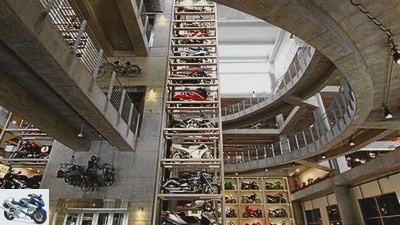
Blacksmith
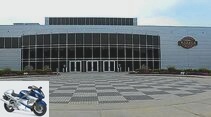
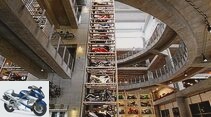
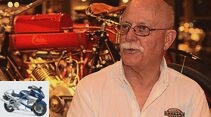
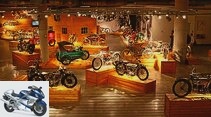
21 pictures
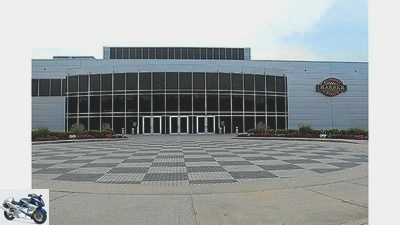
Blacksmith
1/21
The Barber Vintage Motorsports Museum, founded in 1995, opened in 2003 in a specially built new building at its current address: 6030 Barber Motorsports Parkway, Birmingham. It is just outside the city of 212,000 people, around 13 miles (20.8 kilometers) from the airport there. Atlanta / Georgia Airport, which is directly served by Germany, is 140 miles (224 kilometers) away. Opening times are from April 1st to September 30th: Mondays to Saturdays 10 a.m. to 6 p.m., Sundays noon to 6 p.m. From October 1st to March 31st, the museum closes at 5 p.m. every day. Admission is $ 15 for adults. Telephone: +1 1205 699-7275, information on the Internet at: www.barbermuseum.org.
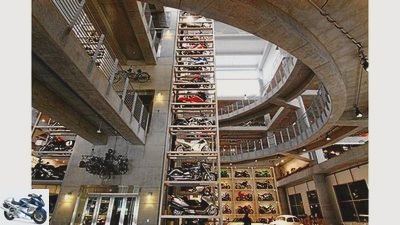
Blacksmith
2/21
The Mecca for motorcyclists. Bikes as far as the eye can see – on top of each other.
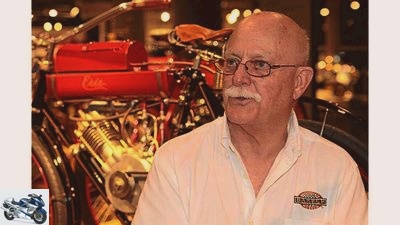
Blacksmith
3/21
Brian Slark, technical advisor at the Barber Museum, has a lot to tell: The 73-year-old used to race.
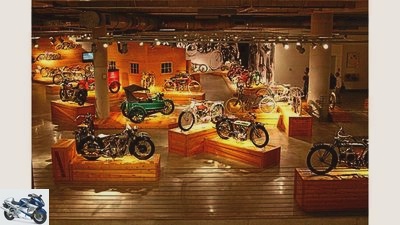
Blacksmith
4/21
The roaring twenties are coming back to life here on two and three wheels. From unrestored to fully restored, from sport to everyday life.
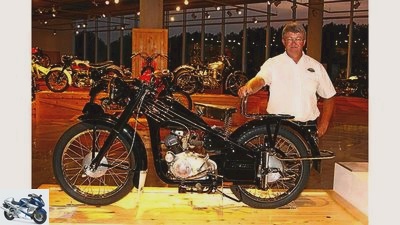
Blacksmith
5/21
Jeff Ray, the museum’s director, is particularly impressed by early Hondas, once harbingers of a new era.
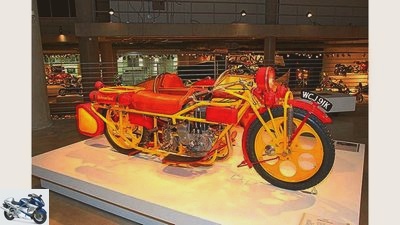
Blacksmith
6/21
Place there: the crazy long prehistoric cattle from Bohmerland from “good old Europe” – here in the rare version with a sidecar.
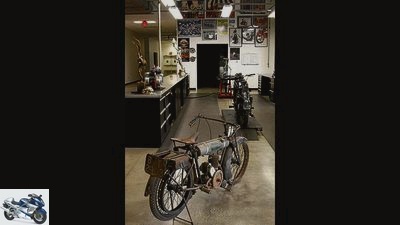
Blacksmith
7/21
A point of honor: the posh restoration workshop.
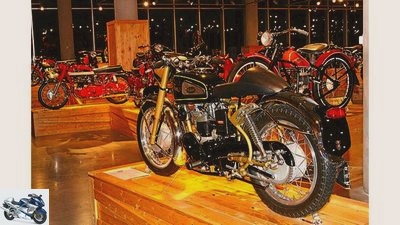
Blacksmith
8/21
Britain rules: One department to indulge in are the machines from the island, here the Velocette Venom Thruxton.
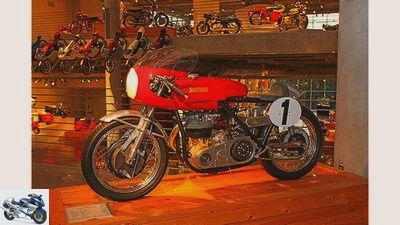
Blacksmith
9/21
Tribute to John Surtees: The car and motorcycle world champion is immortalized here on the tank.

Blacksmith
10/21
Highly exclusive: the Morbidelli prototype with an eight-cylinder V-engine unfortunately never went into series production.
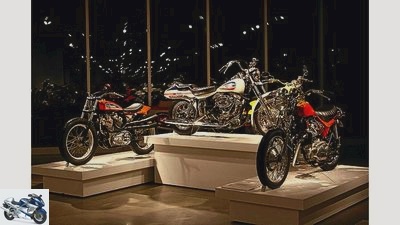
Blacksmith
11/21
Mainly tall handlebars: Harley-Davidson XR 750 and FX 1200 Super Glide, plus Triumph’s Triple Hurricane (from left).
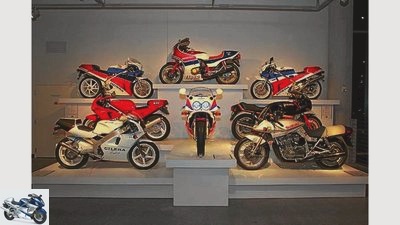
Blacksmith
12/21
Noble sportsmanship: Suzuki Katana and Yamaha FZR, Ducati’s V2-Racer with two and four valves, Honda CB 1100 R and RC 30.
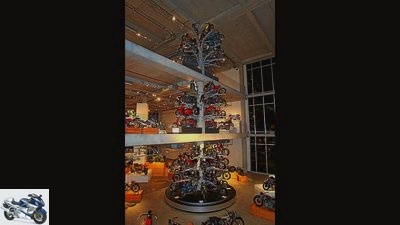
Blacksmith
13/21
The somewhat different tree in the Motorsports Museum.
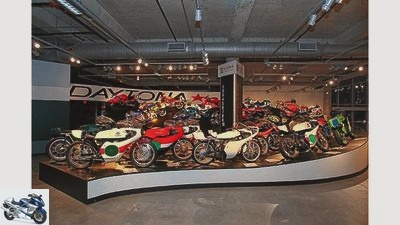
Blacksmith
14/21
Parade of the fast and beautiful: From Birmingham, Alabama, to the Daytona race track it is only 900 kilometers, a stone’s throw.
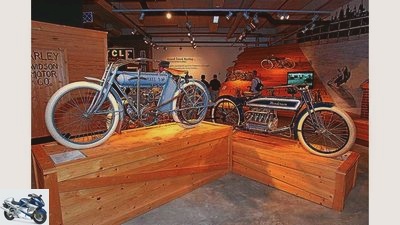
Blacksmith
15/21
V2 or four-cylinder – a historically old question.
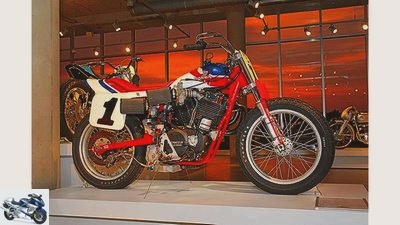
Blacksmith
16/21
Fiery: Honda dirt tracker with 750 V2.
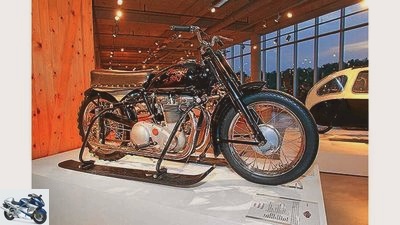
Blacksmith
17/21
Wonderfully crazy, the Indian on skis.
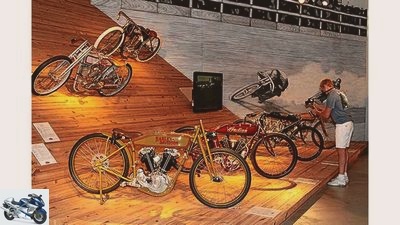
Blacksmith
18/21
This board tracker collection is wonderful.
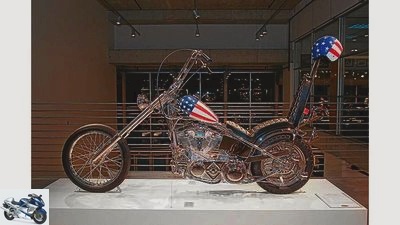
Blacksmith
19/21
Patriotic, famous: Captain America replica.

Blacksmith
20/21
Marvel at technology: The grandiose Britten Racer V 1000 from 1995 – like all machines without a barrier.
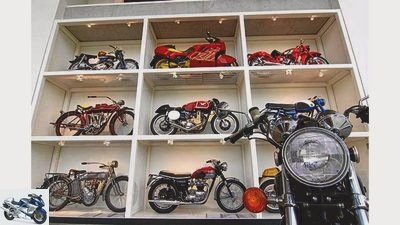
Blacksmith
21/21
Museum foyer with esprit: various motorcycle eras in a type case for men.
to travel
Barber Vintage Motorsports Museum – The Mecca for motorcyclists
The Mecca for motorcyclists
Barber Vintage Motorsports Museum
Content of
Enjoying an evening tour of the world’s largest motorcycle museum, which is bright as day, opens up new perspectives in the heat of the night. On aesthetics, technology and history.
Thomas Schmieder
02/23/2012
It’s hot, very hot. A sultry July day in 2011 gives way to a subtropical summer night in the southern states. The sun melts blood-red on the horizon. The thin clothing sticks to the body. Sweat flows freely, the retina glows with overstimulation. We, six journalists from four European countries, are at the “Barber Vintage Motorsports Museum” at the invitation of Honda USA. In the foyer, a replica of “Captain America”, Peter Fonda’s chopper from the cult film “Easy Rider”, greets visitors.
Diagonally below, a shelf is filled with nine motorcycles that made the era. And look like they’ve just come out of the factory. A fiery red Moto Guzzi Falcone, a yolk yellow Ducati 750 Sport and a burgundy-red Indian V2. Plus a light gray single-cylinder Harley-Davidson and a red BMW K1. A Honda CB 92 is also part of the reception committee.
We haven’t fully entered the Barber Vintage Motorsports Museum yet, and are already amazed. The British National Motorcycle Museum in Birmingham, England, is a true place of pilgrimage for classic enthusiasts. But we are a few thousand kilometers further west, in Birmingham / Alabama. Why is the largest of all motorcycle museums in the world located here of all places? What brought the Mecca of motorcyclists to this very green meadow in the USA? Jeff Ray, the museum director, and Brian Slark, technical advisor, give us the answers during a special tour of the “Barbers”.
We have reached a temple, a sanctuary, a men’s paradise. 70,000 visitors make the pilgrimage every year. From the outside, the silver building with the darkened windows looks modern but unspectacular. But in here the architecture is overwhelming. A spiral elegantly connects five expansive levels, an elevator leads vertically up in the middle of the huge room. Everything inspired by the Guggenheim Museum in New York. In 1998 the Barbers loaned a large part of the exhibits “The art of the motorcycle”, the much-noticed traveling exhibition on the aesthetics of the motorcycle.
Inspired by this, the Barbers presents motorcycles like works of art. “The exhibits should look like they are in a gallery,” says Jeff. “We just love motorcycles – and you should see that too,” admits Brian. The varied presentation alone is absolutely worth seeing. Machines stacked in high shelves and standing on pedestals, hanging from the ceiling or attached to the wall. Sometimes parked freely in the room, in glaring spotlights, or by the dozen in a gigantic steel sculpture, a motorcycle family tree. Like matchbox toys. Sometimes thematically, sometimes sorted by decades. Only barriers are missing. “Please don’t touch” signs are sufficient, please do not touch.

Blacksmith
The Barber Vintage Motorsports Museum, founded in 1995, opened in 2003 in a specially built new building at its current address: 6030 Barber Motorsports Parkway, Birmingham.
The tour starts at the top. Brian and Jeff take us on a journey through time. You and us are enthusiastic about aesthetics, technology and motorcycle history. Abundance wherever the eye looks. What a variety of machines! “We are showing motorcycles from around 200 manufacturers in 20 countries,” says Jeff proudly, but not arrogantly. “From 2500 producers who have existed since 1900.” The who’s who of motorcycle history is gathered here. Un- and fully restored machines, old, very old and young, everyday models, racers, one-offs and milestones, conversions, exotic and million-dollar sellers.
The museum owns more than 1250 motorcycles. Of these, 650 to 700 can be seen all the time. The rest is in the air-conditioned cellar, the museum depot. There they are waiting to be rotated, or to be restored or overhauled in the museum’s own workshop. “99 percent of the machines,” says Brian, “are ready to drive within an hour.” There are no empty engine housings here. Various motorcycles often ride in parades to classic events. Therefore, spare parts have to be procured or reproduced on an ongoing basis. Up to crankshafts, housing covers or brakes.
You then have to do your own casting and welding, turning and milling, ironing and painting. Here or with well-known specialists. “It’s a real challenge with machines over 90,” explains 73-year-old Brian. Craftsmanship, technical, constructive. The in-house, non-public library helps to decipher controversial types or missing parts. She hoards over 6000 books and more than 50 international motorcycle magazines. A treasure trove that also supports research and restoration projects elsewhere.
“Our museum foundation has the task”, explains Jeff, the museum boss, “to preserve the entire international motorcycle history!” Only an American can make such a claim and remain completely humble. Without the nationalist glasses that are otherwise common in the USA, the Barbers spans a good 100 years of motorcycle history. There are 84 Harleys alone, a number of Indians, a few Buells and many other brands from the land of unlimited possibilities. But also hundreds of European and Japanese models, right up to machines from Bridgestone and Showa – before only four brands manufactured motorcycles in the land of the rising sun.
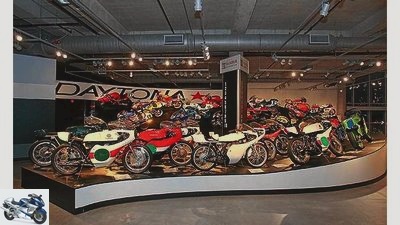
Blacksmith
Parade of the fast and beautiful: From Birmingham, Alabama, to the Daytona race track it is only 900 kilometers, a stone’s throw.
The oldest exhibit is a Steffey from US production from 1902. The air-cooled single-cylinder machine with its wooden spoked wheels and belt drive is still very reminiscent of a bicycle. Nearby is an Erie with a French 2-hp single, built in New York. And a V2 Peugeot with 726 cm³ – the engine with which Norton won the two-cylinder class at the first TT on the Isle of Man in 1907.
The early 20th century is particularly close to Brian’s heart: “That was an exciting era of rapid development,” he enthuses. “From motorized bicycles to real motorcycles within ten short years, with gears, clutches, four-valve cylinder heads and electric lights!” We pay homage to the “Flying Merkel”. That doesn’t mean the flying Chancellor, but a two-cylinder from Ohio / USA. The barely restored Model 71 developed around seven hp in 1913 and looked like a real motorcycle despite the pedals.
Have you ever seen a single-cylinder “emblem” from 1910? Or a Pierce, the first US four-cylinder motorcycle from the same year? The “Militor” also used the same concept, four cylinders standing lengthways in a row. Here as a sidecar machine with a three-speed gearbox including reverse gear, painted entirely in green. Only the top over the two-seater boat is pitch black. The machine, designed for the US military, served in small numbers in France during the First World War in 1918.
We are completely enthusiastic about the beautiful board trackers, Harleys and Indians with V2 engines and low handlebars that stand on wood in a species-appropriate manner. “Imagine,” says Brian smugly, “racing at 75 miles per hour, or 120 km / h, over 45 degrees of sloping planks, with nothing but your feet but brakes!” London to speedway races. Since then the Filius has been a “motorcycle lover”, says the 73-year-old.
We keep listening. Brian raves about Honda’s 1960s RC 161 racing machine: “With the four-cylinder 250, Honda finally demonstrated its constructive skills in the Grand Prix.” At that time, Brian could only dream of 38 hp at 14,000 rpm and a top speed of 220 km / h. Just like we did with the youngest machine in the show in 2008, the sinfully expensive V4 racer Ducati Desmosedici. Also a technological spearhead, like the oval piston legend Honda NR 750 from 1997. Or rather admire the Morbidelli V8, an extremely rare prototype, next to the many GP racers of the small Italo brand?
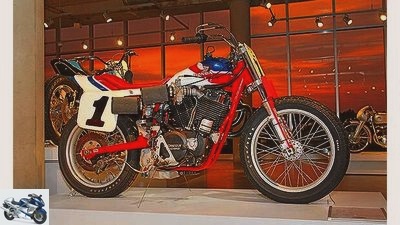
Blacksmith
Fiery: Honda dirt tracker with 750 V2.
A fabulous Vincent Black Shadow from 1951 is not in every museum. Especially not the Black Prince from 1954. Thanks to the large-format full cladding made of fiberglass, the 200 copies built are the ancestors of all super tourers. The Honda CX 650 Turbo stands for a love of technology. And the Victoria Bergmeister from 1953 with a V2 four-stroke engine for a little luxury in everyday life. An Imme 100 also made it to the top of the motorcycle world. It was so ingeniously designed in times of shortage in post-war Germany – with a one-armed parallelogram fork and one-armed drive unit swing arm.
Brian and Jeff know what to show. “You only see what you know.” They praise the Bohmerland from 1925, the longest production motorcycle in history. Innovative with cast aluminum wheels and even with a sidecar. If so, then already. Would you like a few more pulse accelerators? An Ariel Square Four and a Honda CR 750, the Daytona winner from 1970. Adore the Velocette and Norton Manx singles, or the six-cylinder Benelli Sei? Revel in front of the magnificent Royal Enfield Interceptor or marvel at the streamlined, aircraft-inspired Aermacchi Chimera with its lying four-stroke single?
The Triumph T120 got its name Bonneville with a world record on the salt lake of the same name in Utah in 1956. Its 650 parallel twin, 46 hp, was considered the ideal type of the English sports motorcycle at the time. When have you ever seen the revolutionary Britten V 1000 up close? Fast at almost 320 km / h, the calling card of its ingenious designer embodies the successful fight between David and Goliath. Then the Yamaha TZ collection and the former factory racers from Suzuki and Kawasaki stand for the paradigm shift in the 60s and 70s: Japan instead of Europe, two-stroke instead of four-stroke. City runabouts and scooters, with and without trailers, tell of the motorization after 1945.
The abundance of racing and series machines from MV Agusta is large, including three and four-cylinder machines with which Giacomo Agostini and Phil Read were successful. Next to it is the 750 factory racer, which was built for Imola in 1973 but was no longer used. Through racing, George Barber got to know and appreciate world champion John Surtees. That’s why its former 500 MV is here. Plus a whole range of Matchless G 50 and AJS 7R, all perfectly prepared. This also applies to the military machines from the Second World War, from BSA to Harley-Davidson WLA to the sidecars of the former opponent – Zundapp KS 750 and BMW R 75.
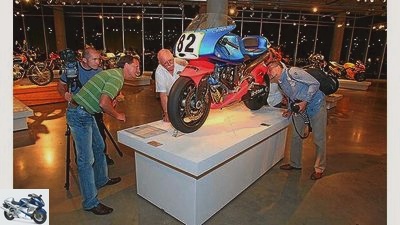
Blacksmith
Marvel at technology: The grandiose Britten Racer V 1000 from 1995 – like all machines without a barrier.
Have you ever heard of a Japanese DSK, a copy of the BMW R 26 from 1960? Do you expect a German Adler MB 250 in a US museum? And whether it informs the visitors that 11,000 copies of the two-cylinder two-stroke were made? By 1957, after the takeover of Grundig, motorcycle production was discontinued in favor of typewriters. The explanations of the exhibits are brief enough to remain easily consumable, but intense enough to highlight what is special about each machine.
Jeff tells how humble the history of the huge museum began. George W. Barber has only been collecting motorcycles since 1989. The super-rich southern gentleman made a fortune with milk and ice cream, runs a dairy company. In his wild days, George Barber drove car races and won 63 races in a Porsche in the 1960s. His largest collection of Lotus racing cars in the world is a matter of honor. In 1994 Barber transferred his two-wheeler collection, already a few hundred pieces, to a non-profit organization. He opened the museum elsewhere in Birmingham in March 1995 and has continuously expanded the collection ever since.
The new building was inaugurated in September 2003, at the gates of the city that once made its steel industry rich. 150 people work for the museum. Next door is the 3.8 kilometer long private racing track “Barber Motorsports Park”. AMA superbike races have already started there. Donations in money and in kind (motorcycles!) To barbers are tax-deductible in the USA, and the museum gratefully issues donation receipts.
We are also grateful for the unforgettable evening. It’s getting close to midnight and Jeff and Brian are working overtime. “Thank you so much!” Inspired, we stumble into the starry night. The largest is probably also the most beautiful motorcycle museum in the world. And the most impressive. The Mecca for motorcyclists is worth a trip. Not just in the heat of the night.
Related articles
-
Report on the Barber Vintage Festival
TSR 16 pictures TSR 1/16 It’s a warm southern morning at the Barber Motorsports Museum, the world’s largest two-wheeler exhibition. A cloudless blue sky…
-
IXS Classic Schuh Vintage: lace-up boots for motorcyclists
IXS clothing Boots IXS Classic Schuh Vintage: lace-up boots for motorcyclists IXS Classic Shoe Vintage Lace-up boots for motorcyclists For motorcyclists…
-
Motorbike Museum Schloss Augustusburg
to travel Augustusburg Castle Motorcycle Museum Scene: Augustusburg Castle Motorcycle Museum 175 motorcycles from almost 125 years Content of 50 years…
-
Portrait of US collector Fred Mork
Blacksmith 27 pictures Blacksmith 1/27 The similarity between human and … Blacksmith 2/27 Blacksmith 3/27 Tons of story (s): whether model kits,…
-
Motorcycle Museum Motorcyclepedia Museum in Newburgh USA
Breakable 27 pictures Breakable 1/27 Is the Ghost Rider Bike one of the most impressive exhibits? Click through the photo show, then you can decide for…
-
Tolls for motorcyclists 2019 – overview of the charges in Europe
Lohse counselor Tolls for motorcyclists 2019 – overview of the charges in Europe Toll for motorcyclists 2019 Overview of fees in Europe Anyone planning a…
-
Review of the Vintage Revival Montlhery 2017
Michael Orth 23 pictures Michael Orth 1/23 Vintage Revival Montlhery 2017 Michael Orth 2/23 The steep curves of Montlhery are raised by 51 degrees, three…
-
to travel Older women motorcyclists Older women motorcyclists Just now! Bikers over 40 – they turn a long nose at the world and cheat good morals. Too…
-
Piaggio Museum reopened in 2018
Piaggio Group 14th pictures Piaggio Group 1/14 The Piaggio Group has extensively renovated the factory museum. Piaggio Group 2/14 The museum was…
-
KTM Motohall Adventure World is probably not a museum after all
KTM 7th pictures KTM 1/7 Impressions from the KTM Motohall. KTM 2/7 Impressions from the KTM Motohall. KTM 3/7 Impressions from the KTM Motohall. KTM 4/7…